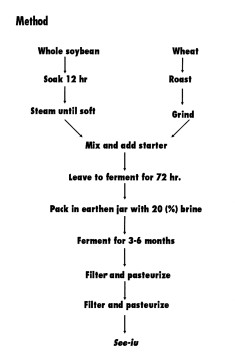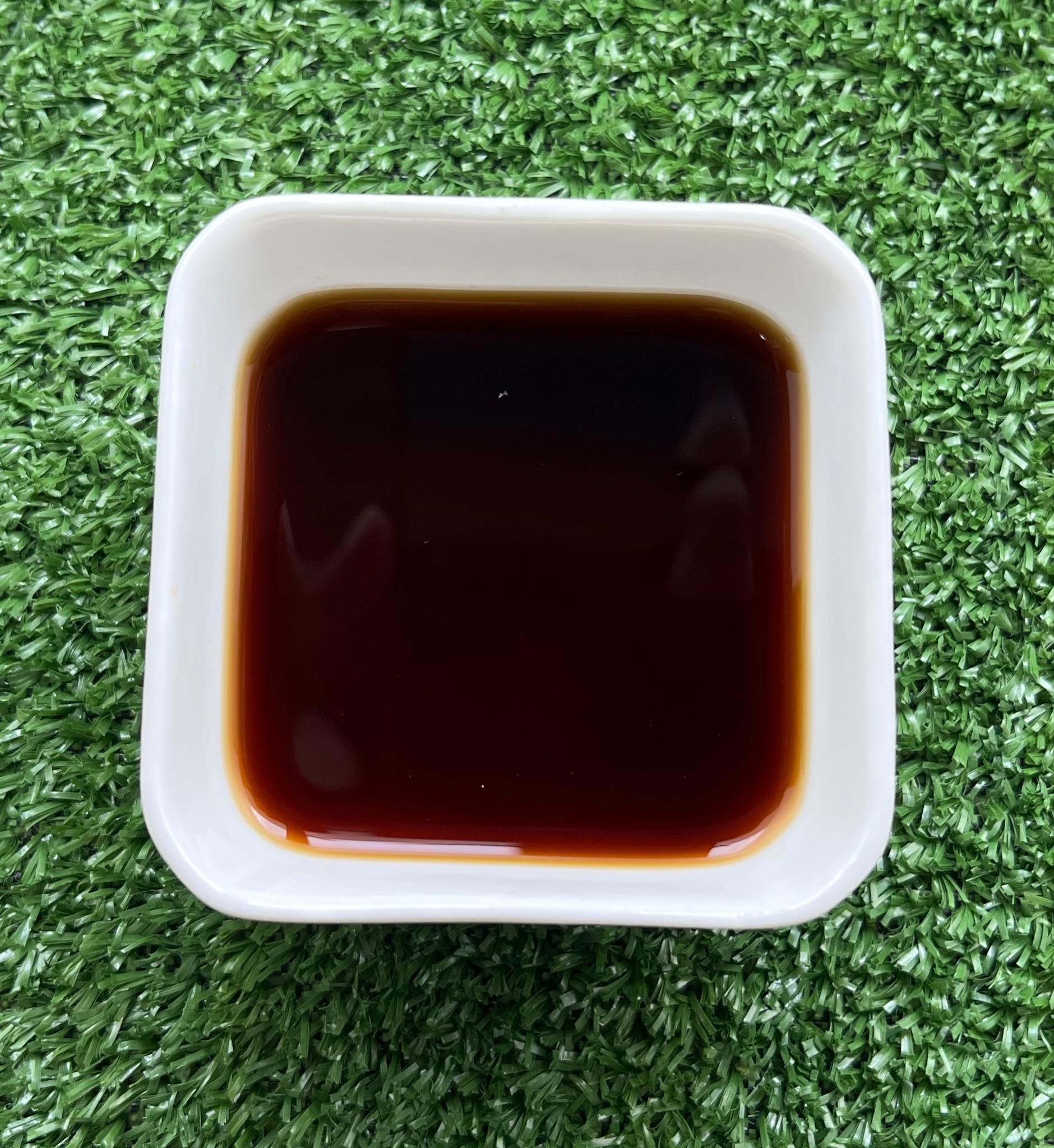Skip to main content
- Name (Thai)
-
ซีอิ๊ว
- Name (English)
-
Say sauce
- Local name
-
See-iu
- Product
-
Soybean
- Ingredients
-
Soybean: Glycine max (Tooa-leuang). Wheat flour or rice flour, salt, starter mould (Aspergillus oryzae).
- Fermentation
-
3-6 months.
- Storage life
-
Many years.
- Microorganisms
-
- Properties
-
Yellowish brown to dark brown liquid, salty taste with pleasant aroma.
- Method
-
1. Wash whole soy beans and soak overnight. The following day cook the beans by steaming or autoclaving until they turn soft. Mix the beans with ground roasted wheat flour in equal quantities. Add starter of Aspergillus oryzae, grown on cooked rice, and mix in thoroughly. Spread the mixture into thin sheets 1-1.5" thick on a bamboo tray and leave for 72 hours. During this incubation time, the sheet is turned over a few times to drive off the heat which occurs while the mould grows. At the end of this period, the product obtained is called Koji, which has greenish yellow and grey mould growing on the surface. The Koji step must be done carefully to prevent contamination with black mould, which produces toxin.
2. Place the Koji in a large earthenware jar until its volume is about 2/3 that of the jar. Add the brine (17-20%) into the jar. The amount of Koji to brine is 1:1-2.
3. Cover the jar and leave in a sunny place to ferment for 3-4 months in the hot season and 4-6 months during the rainy or winter season. The product at this stage is called Moroni and should be stirred once in a while.
4. After fermentation is completed, the liquid part called See-iu is boiled, filtered and bottled.
- Production
-
In medium-scale industry.
- Consumption
-
Use as sauce and seasoning.




